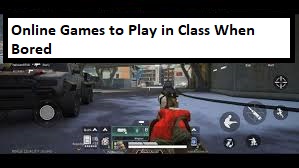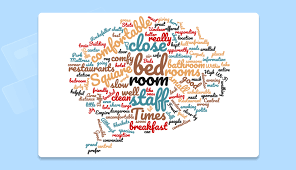Classroom boredom can hinder learning and engagement among students.
Incorporating online games can be an effective strategy to combat boredom, promote active participation, and make learning enjoyable.
In this post, Ngschoolboard will explore a variety of online games that can be played in the classroom when students need a break or when boredom sets in, fostering an interactive and stimulating learning environment.
SEE ALSO: Educational Games for Students

Benefits of Incorporating Online Games in the Classroom
The following are some of the advantages of using Internet games in the classroom:
- Enhanced student motivation and participation: Online games have the power to captivate students’ attention and make learning more enjoyable. They create a sense of excitement and engagement, motivating students to actively participate in classroom activities.
- Fostering critical thinking and problem-solving skills: Many online games necessitate critical thinking, information analysis, and problem-solving. These games often present challenges that encourage students to think creatively and develop effective problem-solving strategies.
- Promoting collaboration and teamwork: Numerous online games involve cooperative gameplay, where students work together to achieve common goals. This promotes teamwork, communication, and collaboration among students, fostering essential social skills.
- Individualized learning experiences: Online games can be customized to meet student’s individual needs and learning styles. Teachers can select games that align with students’ skill levels and provide differentiated instruction, allowing each student to progress at their own pace.
- Immediate feedback and assessment: Online games often provide instant feedback, allowing students to assess their performance in real time. This immediate feedback helps students identify areas for improvement and reinforces learning objectives.
- Reinforcement of educational concepts: Online games can serve as a supplementary tool to reinforce educational concepts taught in the classroom. They offer interactive ways to practice and apply knowledge, making the learning process more memorable and impactful.
- Increased retention and long-term memory: Engaging in online games often involve elements of gamification, such as rewards and achievements. These elements contribute to increased student motivation, attentiveness, and improved retention of learned material.
- Access to a variety of resources and topics: Online games span a wide range of disciplines and topics, exposing players to a variety of instructional content. This exposure can spark curiosity and encourage further exploration of various subjects beyond the classroom.
- Real-world connections: Many online games simulate real-world scenarios or incorporate real-life applications of academic concepts. This assists students in grasping the practical application of what they are studying and bridges the gap between theoretical knowledge and real-world experiences.
- Preparation for the digital era: Integrating online games in the classroom prepares students for the digital age. It equips them with essential digital literacy skills, such as navigating online platforms, using technology tools, and practising responsible digital citizenship.
Educators may build dynamic and engaging learning experiences that enhance student engagement, critical thinking, cooperation, and skill development by utilizing the benefits of online games.
Factors to Consider When Choosing Online Games for Classroom Use
Consider the following characteristics when selecting internet games for classroom use:
- Educational value and alignment with curriculum: Check if the online game matches with the curriculum’s learning objectives and content. Look for games that reinforce specific educational concepts, skills, or topics relevant to the subject being taught.
- Age appropriateness and content suitability: Consider the age range and maturity level of your students when selecting online games. Ensure that the game’s content is appropriate and aligns with the ethical guidelines and values of your educational institution.
- Accessibility and compatibility with school technology: Verify that the online game can be accessed on the devices available in your classroom, such as computers, tablets, or interactive whiteboards. Check for compatibility with the operating systems and browsers used in your school’s technology infrastructure.
- Ease of use and user interface: Choose online games that have intuitive user interfaces and are easy for students to navigate independently. Complex or confusing interfaces may impede students’ ability to fully engage with the game and hinder the learning experience.
- Interactivity and engagement: Look for online games that actively engage students through interactive elements, challenges, rewards, and meaningful feedback. Games that foster student participation and provide a stimulating learning environment are more likely to enhance learning outcomes.
- Assessments and progress tracking: Consider whether the online game offers built-in assessment features or progress-tracking capabilities. These tools can assist you in tracking pupils’ progress, identifying areas for growth, and monitoring their performance over time.
- Safety and privacy: Prioritize the safety and privacy of your students when choosing online games. Select games that have appropriate security measures in place, such as encryption of personal data and adherence to privacy regulations. Ensure that the game does not collect or share sensitive information without consent.
- Reviews and recommendations: Read reviews or seek recommendations from trusted sources, such as other educators or reputable educational websites. Their insights can help you gauge the quality, effectiveness, and suitability of the online game for classroom use.
- Cost and Licensing: Consider the cost implications and licensing requirements associated with the online game. Determine whether the game is free to play or requires a subscription or payment. Ensure compliance with any copyright or licensing agreements.
- Feedback from students: Involve students in the decision-making process by seeking their feedback and preferences regarding online games. Consider their interests, preferences, and comfort level with technology when making your selection.
By taking these criteria into account, you may select online games that correspond with your educational goals, effectively engage students, and provide a happy and productive learning experience in the classroom.
Language and Literature Games
Here are some language and literature games that you can incorporate into the classroom:
- Word Scramble: Students unscramble jumbled letters to form meaningful words. This game helps build vocabulary, improve spelling skills, and enhance word recognition.
- Story Chain: Each student adds a sentence or paragraph to a collaborative story, creating a narrative as it progresses. This game promotes creativity, storytelling abilities, and cooperation among students.
- Literary Trivia: Students answer questions related to famous authors, books, and literary works. This game tests their knowledge of literature and encourages the exploration of different literary genres.
- Vocabulary Builder: Students engage in interactive activities like word matching, synonyms and antonyms, or completing sentence exercises to enhance their vocabulary skills. This game reinforces word meanings and usage.
- Sentence Construction: Students construct grammatically correct sentences using given words or phrases. This game strengthens grammar skills, sentence structure, and creative writing abilities.
- Book Bingo: Students fill out bingo cards with book titles, authors, or literary elements. As they read books, they mark corresponding spaces. This game encourages reading and exposes students to various literary works.
- Literary Charades: Students act out or pantomime characters, book titles, or literary terms while their peers guess the correct answer. This game promotes active engagement with literature and enhances understanding of characters and themes.
- Poetry Slam: Students perform their own poetry or recite famous poems in a competitive or collaborative setting. This game develops public speaking skills, fosters an appreciation for poetry, and encourages self-expression.
- Literary Hangman: Students guess letters to reveal a hidden word or phrase related to literature. This game improves vocabulary, spelling, and familiarity with literary terms.
- Plot Twist: Students create alternative endings or unexpected plot twists to famous stories or books. This game encourages critical thinking, creativity, and analytical skills.
- Literary Pictionary: Students draw representations of characters, settings, or literary concepts while others guess the correct answer. This game enhances visual interpretation and understanding of literature.
- Guess the Author: Students read excerpts from various authors’ works and try to identify the author. This game tests their knowledge of authors’ writing styles and encourages the exploration of different literary voices.
Incorporating these language and literature games in the classroom can make learning engaging, foster a love for reading, and improve language skills among students.
Mathematics Games
Here are some mathematics games that you can incorporate into the classroom:
- Math Jeopardy: Students participate in a quiz-style game where they answer questions across various math topics, earning points for correct responses. This game reinforces mathematical concepts and encourages friendly competition.
- Sudoku: Students solve number puzzles by placing digits in the correct positions within a grid, following specific rules. This game helps you improve your logical reasoning, critical thinking, and problem-solving abilities.
- Shape Patterns: Students identify and continue patterns using geometric shapes, helping them practice pattern recognition, spatial reasoning, and logical thinking.
- Math Bingo: Students solve math problems and mark corresponding answers on their bingo cards. In a fun and interactive approach, this game reinforces basic arithmetic abilities such as addition, subtraction, multiplication, and division.
- Math Relay Race: Students work in teams to solve math problems, with each member completing a task before passing it on to the next team member. This game promotes collaboration, time management, and quick problem-solving skills.
- Math Puzzles: Students solve math-related puzzles, such as number sequences, logic puzzles, or brain teasers. This game enhances critical thinking, problem-solving, and mathematical reasoning abilities.
- Measurement Scavenger Hunt: Students explore the classroom or school environment to find objects of specific measurements, such as length, weight, or volume. This game reinforces measurement concepts and encourages practical application.
- Fraction Pizza: Students create their own pizzas using various toppings, and then divide and compare the fractions representing each topping. This game helps students understand and manipulate fractions in a tangible way.
- Math Card Games: Students participate in card games that require mathematical operations such as addition, subtraction, multiplication, and number comparison. Games like “War,” “Math War,” or “Multiplication War” make learning math facts enjoyable.
- Math Board Games: Students play board games designed specifically to reinforce mathematical concepts and skills. These games cover various topics like number sense, geometry, or algebra, providing an engaging way to practice math.
- Math Olympiad: Students participate in a math competition that involves solving challenging math problems individually or in teams. This game encourages problem-solving, critical thinking, and tenacity.
- Math Dice: Students roll dice and use the numbers generated to solve math problems or create equations. This game enhances mental math skills, quick calculations, and number sense.
Incorporating these mathematics games in the classroom can make learning math enjoyable, promote active engagement, and reinforce essential mathematical concepts and skills among students.
Science and Nature Games
Here are some science and nature games that you can incorporate into the classroom:
- Virtual Experiments: Students engage in simulated experiments using online platforms or virtual lab simulations. This game allows them to explore scientific concepts, perform hands-on activities, and develop critical thinking and data analysis skills.
- Environmental Quiz: Students answer questions related to environmental science and sustainability. This game tests their knowledge of ecological concepts, promotes awareness of environmental issues, and encourages responsible behaviour towards nature.
- Animal Identification: Students identify different species of animals through pictures or descriptions. This game enhances their knowledge of biodiversity, animal characteristics, and classification.
- Nature Scavenger Hunt: Students explore the school grounds or nearby nature areas to find and identify various elements of nature, such as plants, insects, or rocks. This game encourages observation skills, scientific inquiry, and appreciation for the natural world.
- Science Trivia: Students play a quiz-style game that covers a variety of scientific topics such as biology, chemistry, physics, and earth science. This game tests their knowledge of scientific facts, principles, and discoveries.
- Science Board Games: Students play board games specifically designed to reinforce scientific concepts and principles. These games cover topics like the human body, ecosystems, the solar system, or scientific methods, making learning interactive and fun.
- STEM Building Challenges: Students engage in hands-on activities where they design and build structures using everyday materials. While incorporating science, technology, engineering, and math, these challenges foster creativity, problem-solving, and critical thinking skills.
- Weather Forecasting: Students learn about weather patterns, meteorology, and forecasting by using online tools or creating their own weather predictions. This game enhances understanding of weather phenomena and scientific data analysis.
- Microscope Exploration: Students use microscopes to observe and explore microscopic organisms or objects. This game introduces them to the world of microscopy, biology, and the fascinating details of the microscopic world.
- Science Show and Tell: Students present and explain a scientific concept, experiment, or natural phenomenon to their classmates. This game promotes research skills, communication, and public speaking while expanding scientific knowledge among students.
- Solar System Exploration: Students explore the solar system through interactive online platforms or 3D models. This game allows them to learn about planets, moons, space exploration, and astronomical concepts.
- Science Bingo: Students mark off scientific terms, concepts, or images on their bingo cards as they are called out. This game reinforces scientific vocabulary, concepts, and recognition of scientific visuals.
Incorporating these science and nature games in the classroom can make learning scientific concepts engaging, foster curiosity, and develop critical thinking and observational skills among students.
History and Social Studies Games
Here are some history and social studies games that you can incorporate into the classroom:
- Historical Timeline: Students create timelines of historical events, placing them in chronological order. This game enhances understanding of historical periods, connections between events, and the development of civilizations.
- Geography Bee: Students participate in a quiz-style game where they answer questions about world geography, including countries, capitals, landmarks, and physical features. This game improves knowledge of global geography and fosters a sense of cultural awareness.
- Cultural Exchange: Students research and present about different cultures, including their traditions, customs, and historical significance. This game promotes cultural understanding, appreciation, and empathy among students.
- Historical Role Play: Students act out historical events, assuming the roles of significant figures from the past. This game encourages critical thinking, research skills, and understanding of historical contexts.
- Map Skills Challenge: Students engage in activities that involve map reading, interpreting symbols, and using latitude and longitude coordinates. This game improves map-reading skills and understanding of spatial relationships.
- Famous Speeches: Students examine and deliver historical speeches such as Martin Luther King Jr.’s “I Have a Dream” speech or Winston Churchill’s “We Shall Fight on the Beaches” speech. This game develops public speaking skills, enhances comprehension of historical significance, and encourages effective communication.
- Historical Puzzles: Students solve puzzles or complete crossword puzzles that focus on historical events, figures, or vocabulary. This game reinforces knowledge of historical facts and terminology.
- Government Simulation: Students take on roles as citizens, elected politicians, or members of the court in a simulation of a democratic government. This game promotes an understanding of democratic processes, civic responsibility, and decision-making.
- Historical Detective: Students analyze primary and secondary sources to investigate historical mysteries or events. This game enhances research skills, critical thinking, and analysis of historical evidence.
- Cultural Heritage Showcase: Students research and present their own cultural heritage or that of others in the classroom, sharing traditions, artefacts, or stories. This game fosters an appreciation for cultural diversity and an understanding of cultural heritage.
- Social Studies Jeopardy: Students answer questions across various social studies topics, including history, geography, economics, and civics. This game tests their knowledge and understanding of social studies concepts while promoting friendly competition.
- Current Events Discussion: Students discuss and analyze current news articles or events from around the world, examining their social, political, and economic implications. This game develops critical thinking skills, encourages respectful dialogue, and promotes global awareness.
By incorporating these history and social studies games in the classroom, you can make learning engaging, promote active participation, and deepen students’ understanding of historical events, cultures, and societal dynamics.
Art and Creativity Games
Here are some art and creativity games that you can incorporate into the classroom:
- Collaborative Art: Students work together to create a large-scale artwork or mural, combining their individual artistic styles and ideas. This game promotes teamwork, creativity, and visual expression.
- Pictionary: Students take turns drawing pictures while their classmates guess the word or concept being represented. This game enhances visual communication, creativity, and imagination.
- Sculpture Challenge: Students use various materials, such as clay, paper, or recycled objects, to create sculptures based on specific themes or prompts. This game promotes three-dimensional thinking as well as creativity and problem-solving abilities.
- Art Trivia: Students answer questions related to famous artists, art movements, and significant works of art. This game tests their knowledge of art history, promotes art appreciation, and encourages research.
- Digital Art Creation: Students use digital tools or apps to create digital artwork, such as digital paintings or graphic designs. This game combines technology with artistic expression and allows for experimentation and creativity.
- Art Charades: Students act out or use gestures to represent famous works of art, art styles, or art-related concepts. This game encourages interpretation, observation, and understanding of visual art.
- Still, Life Drawing: Students set up a still-life arrangement with objects and draw or paint what they see. This game improves observational skills, attention to detail, and artistic techniques.
- Art Exhibition: Students curate and present their own art exhibition, showcasing their artworks to the class or the school community. This game promotes confidence, presentation skills, and self-expression through art.
- Collage Creation: Students use magazines, newspapers, or found objects to create collages based on specific themes or ideas. This game encourages creativity, composition skills, and the exploration of different artistic mediums.
- Artistic Storytelling: Students create illustrations or visual narratives based on stories, poems, or historical events. This game combines art with storytelling and enhances visual interpretation and creative thinking.
- Colour Mixing Challenge: Students experiment with colour mixing using paint, markers, or digital tools to create new colours and shades. This game introduces the colour theory, enhances colour recognition, and encourages artistic exploration.
- Art Critique: Students analyze and discuss artworks, sharing their interpretations, opinions, and constructive feedback. This game develops critical thinking skills, art appreciation, and the ability to articulate artistic concepts.
Incorporating these art and creativity games in the classroom can nurture artistic expression, boost imagination, develop critical thinking skills, and foster an appreciation for art among students.
SEE ALSO: Free Interactive Online Games for Students
Physical Education and Fitness Games
Here are some physical education and fitness games that you can incorporate into the classroom:
- Fitness Circuit: Students do tasks such as jumping jacks, push-ups, lunges, and sit-ups while they rotate through a number of fitness stations. This game promotes cardiovascular fitness, strength, and overall physical endurance.
- Relay Races: Students participate in relay races where they run, hop, skip, or perform various locomotor movements to complete the race. This game improves agility, coordination, teamwork, and competitive spirit.
- Fitness Dice: Students roll dice with different exercises listed on each side and perform the exercise corresponding to the number rolled. This game adds an element of randomness and fun to fitness activities.
- Balloon Volleyball: Students play volleyball using a balloon instead of a ball, focusing on teamwork and coordination. This game improves hand-eye coordination, and motor skills, and promotes a safe and inclusive environment.
- Obstacle Course: Students navigate through a course filled with obstacles such as cones, agility ladders, and hurdles. This game enhances agility, balance, coordination, and problem-solving skills.
- Dance Party: Students participate in a dance session where they learn and perform dance routines or freestyle dance to upbeat music. This game promotes cardiovascular fitness, coordination, creativity, and self-expression.
- Yoga and Mindfulness: Students practice yoga poses and engage in mindfulness activities to improve flexibility, balance, focus, and reduce stress. This game promotes physical and mental well-being.
- Fitness Bingo: Students mark off fitness-related activities or exercises on their bingo cards as they complete them. This game encourages students to engage in a variety of fitness activities and promotes a healthy lifestyle.
- Scavenger Hunt: Students search for hidden objects or complete physical challenges within a designated area. This game incorporates physical activity, problem-solving, and teamwork.
- Sports Day: In a friendly and competitive setting, students compete in a range of athletic activities such as basketball, soccer, and relay races. This game improves sportsmanship, teamwork, and athletic skills.
- Fitness Memory Game: Students play a memory-matching game where they flip cards to find pairs of exercise movements or fitness-related images. This game improves memory skills while promoting physical activity.
- Fitness Challenges: Students engage in fitness challenges, such as plank holds, wall sits, or timed sprints, aiming to improve their personal bests and achieve fitness goals. This game encourages self-improvement, setting goals, and tenacity.
By incorporating these physical education and fitness games in the classroom, you can promote physical activity, develop motor skills, encourage teamwork, and foster a positive attitude towards a healthy and active lifestyle among students.
Coding and Technology Games
Here are some coding and technology games that you can incorporate in the classroom:
- Coding Challenges: Students engage in coding challenges or puzzles that require them to write code to solve specific problems or tasks. This game promotes logical thinking, problem-solving skills, and computational thinking.
- Coding Board Games: Students play board games specifically designed to introduce coding concepts and principles. These games often involve logic, sequencing, and algorithmic thinking, making learning coding enjoyable and interactive.
- Code-A-Thon: Students participate in coding competitions where they develop their own projects or solve coding problems within a specified time limit. This game fosters creativity, teamwork, and coding proficiency.
- Robot Programming: Students program robots using block-based coding languages or programming platforms designed for educational purposes. This game combines technology with coding, allowing students to see the physical manifestation of their code.
- Code Golf: Students compete to write the shortest and most efficient code to solve a given problem. This game encourages optimization, problem-solving, and critical thinking skills.
- Digital Storytelling: Students use coding or interactive storytelling tools to create digital stories or interactive narratives. This game combines coding with creative writing and digital media, enhancing storytelling skills and technological literacy.
- Game Development: Students design and develop their own video games using game development platforms or coding languages. This game promotes creativity, problem-solving, and logical thinking while incorporating technology.
- App Inventor: Students use visual programming tools to create mobile apps for smartphones or tablets. This game introduces app development, user interface design, and computational thinking.
- Code-Based Art: Students create visual art or animations using coding languages or platforms that allow for artistic expression. This game combines coding with creativity and artistic exploration.
- Web Design: Students learn and practice web design principles by creating their own websites or web pages. This game introduces HTML, CSS, and website development, fostering digital literacy and creativity.
- Virtual Reality (VR) Experiences: Students use VR platforms or tools to create virtual reality experiences or interactive simulations. This game combines coding with immersive technologies, promoting creativity, problem-solving, and technological understanding.
- Debugging Challenges: Students debug and fix faulty code or programs, identifying and correcting errors. This game enhances problem-solving skills, attention to detail, and understanding of code logic.
Incorporating these coding and technology games in the classroom can foster computational thinking, problem-solving skills, creativity, and digital literacy among students.
It allows them to explore the exciting world of coding and technology in a hands-on and engaging way.
Remember, when incorporating online games in the classroom, it is important to have a clear educational purpose, align the games with learning objectives, and provide guidance and support to students.
Online games can be powerful tools to enhance engagement, motivation, and learning outcomes when used effectively in the classroom.
SEE ALSO: Online Classroom Games Similar to Kahoot
Quiz Games
1. Kahoot!

Kahoot! is a popular online platform that allows teachers to create interactive quizzes and games for their students.
Students can join the game using their smartphones or computers, and they compete against each other to answer questions correctly.
Kahoot! offers a fun and engaging way to review concepts, reinforce learning, and inject an element of friendly competition into the classroom.
2. Quizizz

Quizizz is another interactive quiz game that can be played in the classroom.
It offers a vast library of pre-made quizzes on various subjects, or teachers can create their quizzes.
Students can play individually or in teams, answering questions at their own pace.
Quizizz provides immediate feedback and allows teachers to track student progress, making it an ideal game for engaging and assessing students’ understanding.
Collaborative Word Games
1. Padlet

Padlet is an online collaborative platform where students can contribute ideas, words, or sentences related to a specific topic.
Teachers can create a Padlet board and invite students to add their inputs in real time.
This game promotes creativity, collaboration, and critical thinking as students build upon each other’s ideas to create a collective piece of work.
2. Word Cloud Generators

Word cloud generators, such as Wordle or WordArt, can be used to create visually appealing word clouds based on a specific theme or topic.
Teachers can ask students to contribute words or phrases related to the subject, and the word cloud is generated in real-time.
This game encourages students to brainstorm, analyze key concepts, and visualize the collective understanding of the class.
Virtual Escape Rooms
1. Breakout EDU

Breakout EDU offers a collection of online escape room games designed for educational purposes.
These virtual escape rooms require students to solve puzzles, find clues, and work collaboratively to “escape” within a given time limit.
Breakout EDU games foster critical thinking, problem-solving skills, and teamwork while adding an element of excitement and challenge to the classroom.
2. Digital Breakouts

Digital breakouts are online puzzle games where students use their problem-solving skills to unlock codes and solve mysteries.
Teachers can find pre-made digital breakout games or create their own using platforms like Google Forms or Breakout EDU.
Digital breakouts provide an immersive and interactive experience, encouraging students to think critically and apply their knowledge in a fun and engaging way.
Educational Trivia Games
1. Quizlet Live

Quizlet Live is a collaborative learning game that engages students in team-based competitions.
Teachers create sets of study materials on Quizlet, and students are divided into teams.
The game prompts students to work together to answer questions correctly, promoting collaboration, communication, and retention of information.
2. Factile

Factile is an online jeopardy-style game that allows teachers to create customized quizzes or use pre-made templates.
Students compete individually or in teams, answering questions from various categories.
Facile combines the excitement of a game show with educational content, making it an excellent choice to review concepts and engage students in a friendly competition.
See Interactive Games for College Students
FAQs answers
Here are some frequently asked questions related to incorporating online games in the classroom, along with their answers:
Q1: How can online games benefit students in the classroom? A1: Online games in the classroom can benefit students by making learning more engaging and interactive. They promote critical thinking, problem-solving, teamwork, and creativity. Additionally, online games can help students develop digital literacy skills and familiarity with technology.
Q2: Are online games suitable for all age groups in the classroom? A2: Yes, online games can be adapted to suit different age groups and grade levels. There are online games available for elementary, middle, and high school students, with varying levels of complexity and content. Teachers can choose games that align with the curriculum and the developmental needs of their students.
Q3: How can teachers ensure that online games are educational and aligned with learning objectives? A3: Teachers can select online games that are specifically designed for educational purposes or that align with the learning objectives of the curriculum. They can review the content, gameplay, and learning outcomes of the games before incorporating them in the classroom. Additionally, providing guidance and instructions to students while they engage with the games can help ensure educational value.
Q4: What considerations should be made regarding the accessibility and inclusivity of online games in the classroom? A4: It is important to consider the accessibility and inclusivity of online games in the classroom. Teachers should ensure that the games can be accessed by all students, including those with disabilities or special needs. They should also consider the availability of options for customization, such as adjustable difficulty levels or language options, to accommodate diverse learners.
Q5: How can online games be integrated with the curriculum and academic standards? A5: Teachers can align online games with the curriculum by selecting games that cover specific learning objectives or content areas. They can integrate the games as supplemental activities or as part of project-based learning. By connecting the games to academic standards and providing guidance and reflection activities, teachers can ensure that they contribute to students’ academic progress.
Q6: How can online games be effectively used in classroom management and behaviour management? A6: Online games can be used as incentives or rewards for positive behaviour and academic achievements. Teachers can establish clear guidelines for using online games, set specific goals or milestones for students to reach, and track their progress. By incorporating online games as a motivational tool, teachers can enhance classroom management and encourage positive behaviour.
Q7: How can parents be involved in supporting the use of online games in the classroom? A7: Teachers can communicate with parents about the use of online games in the classroom, explaining the educational benefits and learning outcomes. They can provide information on recommended games, offer suggestions for continued learning at home, and involve parents in discussions or activities related to the games. Collaboration between teachers and parents can enhance students’ learning experiences with online games.
Q8: What precautions should be taken to ensure online safety when using online games in the classroom? A8: Teachers should carefully select online games from trusted sources and platforms. They should ensure that the games comply with privacy and security standards, have appropriate content for students, and provide a safe online environment. Teachers should also educate students about online safety, including responsible internet use and proper behaviour when interacting with online games.
Remember, when incorporating online games in the classroom, it is important to have a clear educational purpose, align the games with learning objectives, and provide guidance and support to students.
Online games can be powerful tools to enhance engagement, motivation, and learning outcomes when used effectively in the classroom.
SEE ALSO: Interactive Online Games for Students
Conclusion
Integrating online games into the classroom can provide an effective solution to combat boredom, boost engagement, and enhance learning outcomes.
Whether it’s quiz games like Kahoot! and Quizizz, collaborative word games like Padlet and word cloud generators, virtual escape rooms such as Breakout EDU and digital breakouts, or educational trivia games like Quizlet Live and Factile, there are numerous options available to add an element of fun and interactivity to the learning environment.
By leveraging these online games, teachers can transform boredom into excitement, creating an atmosphere that promotes active participation and a love for learning.
NGschoolBoard is not just a blog, but a project designed to make students’ research easy and faster. We have a dedicated team of staff working tirelessly to make sure you get quality information from our blog and all other features we will be rolling out soon. do well to subscribe to an email subscription so that you don’t miss out on our latest updates. Shalom!!!





